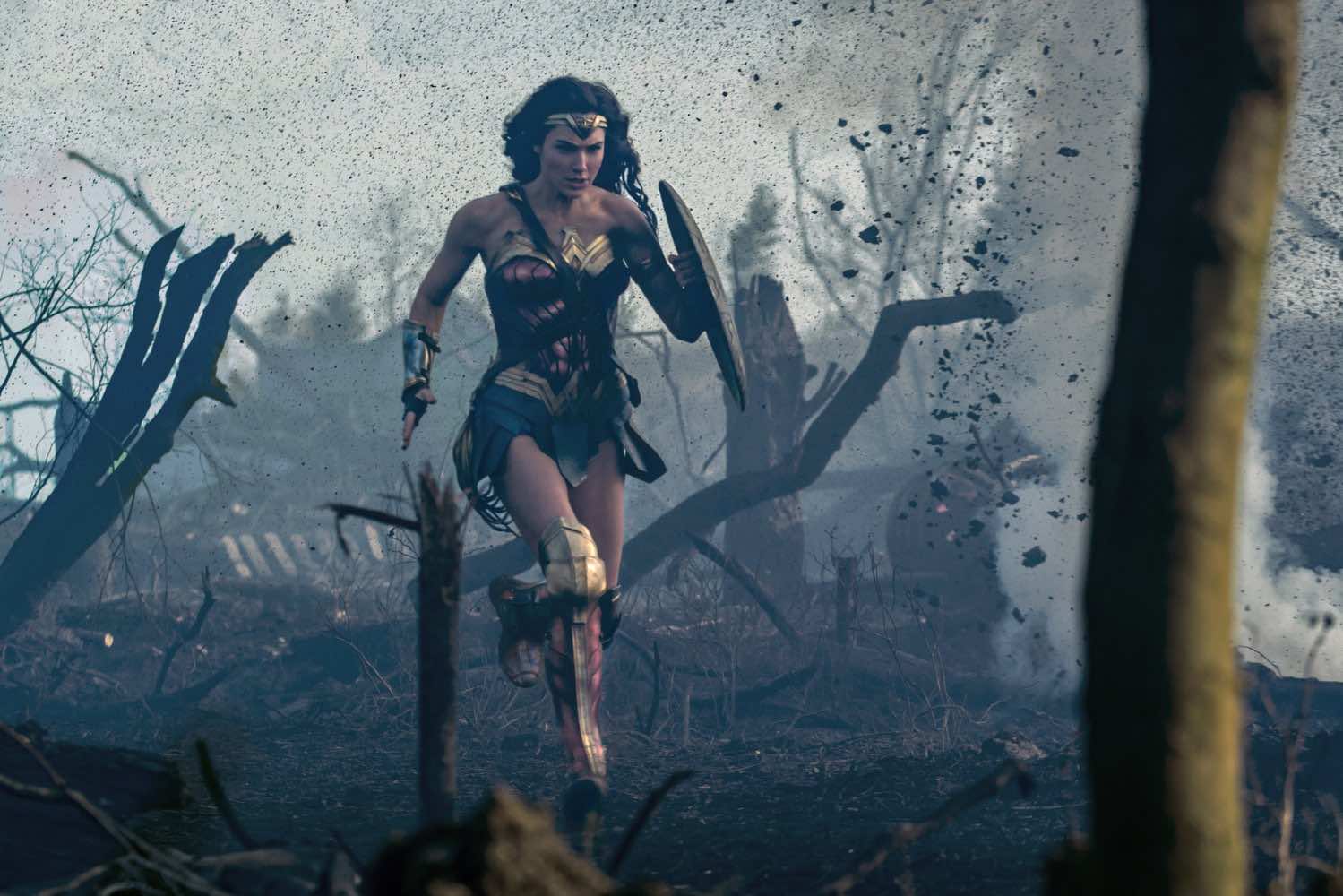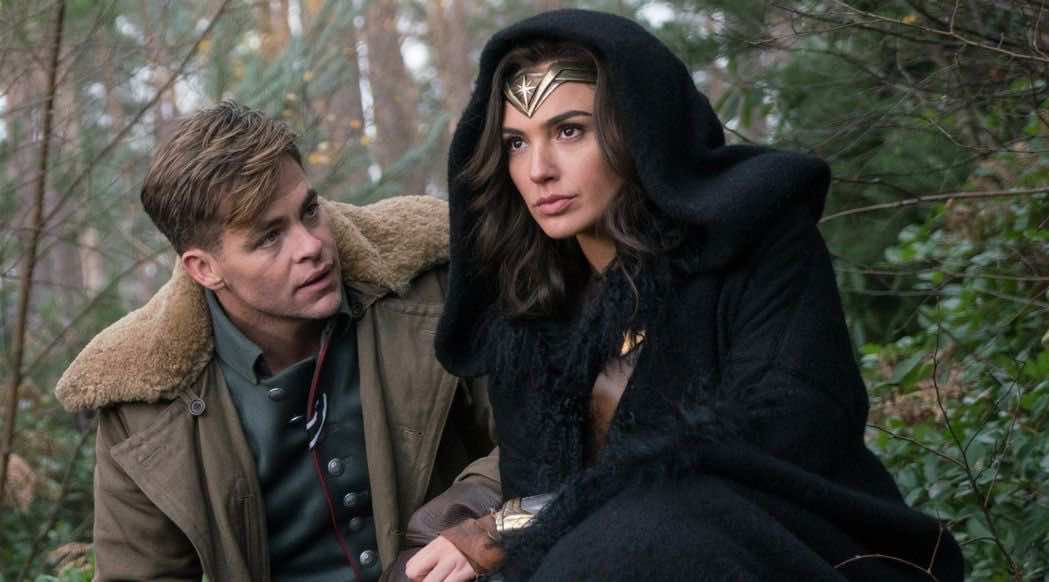
In the shadow of the hype that we now finally have a Wonder Woman movie lies a clear truth about big budget studio productions: If you are going to take risks with them, make sure it doesn’t stray from the formula. In essence, Wonder Woman is another overly long, indulgent superhero movie with concerns for origin stories and the usual climax of overwhelming, character-drowning pyrotechnics. For those looking for more than that, there’s something to be said in the performances of Gal Gadot and Chris Pine, and their scenes of intimacy. They recall the tightly written moments in what made character and relationship development so interesting in such high profile movies like Star Trek: Into Darkness (Film Review: ‘Star Trek: Into Darkness’ proves J.J. Abrams a better director than George Lucas) and Star Wars: The Force Awakens (Star Wars: The Force Awakens hits nearly all the right notes with breezy, rich flair — a film review).
There is a light if quite vague touch of humor toward the fact that the hero of this movie is not only a woman but also bisexual, something that was only recently addressed last year in the latest Wonder Woman comic book reboot, Wonder Woman: Year One. Naiveté and decorum is slyly flipped during a nocturnal boat ride from the mystical island of Amazons, Themyscira, to World War I Europe. Pine’s character, Steve Trevor, struggles to accommodate himself for someplace to sleep, stumbling though an explanation about marriage and sleeping together, while our hero simply explains the comforts of the cushions at the bow of the boat that just happen to cradle Steve’s body in the best yoga pose of all: Shavasana. Someone needs to relax it seems, and it ain’t the focused, unflappable Wonder Woman.

A strong character through and through, Wonder Woman’s spirit is beautifully handled by Gadot with a balance of humility, resilience and charm. Pine, meanwhile plays the World War I British spy with a solemnity characteristic of his internal conflict to fulfill his duty and a buried sympathy toward the immediacy of the horrors of war that surround him. The chemistry between these divergent characters transcends gender expectations. They are instead defined by experiences. It’s also, of course, in the self-reflective awareness on the filmmakers part of what it means to finally have a complex female heroine on screen. As was particularly apparent, the previous DC/Warner Bros. film we reviewed, Suicide Squad (Suicide Squad is an exasperatingly dull sidebar to super hero genre — a film review) squandered its women characters in mind-numbing if not insulting fashion.
Still, there is plenty of the predictable formula of the superhero genre on display. Let’s face it, intimacy with humanity is far from the main interest of these movies. It’s about showcasing special effects as conduit for bravery. Unfortunately, the humanity that makes the chemistry of Wonder Woman and Steve Trevor is often disrupted when they are turned into digital effects with gestures more akin to pixellated creations for video games than the reality of the actors who portray them. The uncanny valley saps all effort put in by the writers and the actors to portray the messy, horrible and sometimes beautiful world of humanity. Then, of course, there is the expected epic final conflict that will alight the screen with droning explosions and effects that further drown out the filmmakers’ efforts to ground these characters as people.

If there is one impressive use of special effects, it lies in the frequent use of slow motion during action sequences that pause at just the right instance to freeze moments of exertion and athleticism. It also allows for the detail in production design to stand out. There is an earthy, messy quality reflective of the war, something that felt missing from Captain America: The First Avenger (2011), another superhero movie that took place during war-time, whose spare mise-en-scène only called further attention to is vapidness. But, overall the tropes are as expected, including a ragtag group of supporting characters defined by stereotyping. Then there are the plot “twists” some might see coming halfway through the movie. The film feels so predictable that even when you first see Spanish actress Elena Anaya with a half-porcelain face as Dr. Maru, you’ll wonder when the reveal of what lies beneath will happen.
There was a lot made of director Patty Jenkins helming this movie, her first feature since her debut Monster (2003) won an Oscar for lead actress Charlize Theron. She wrote the screenplay for that film and has since gone on to direct a few sporadic TV episodes for the likes of “The Killing” and “Entourage” before directing an obscure TV movie for ABC in 2015 called Exposed. Whatever distinctive voice she showed with her debut is hardly to be found in this movie. All the writers for Wonder Women are men, and one can’t help but notice a concern for the so-called “cinematic universe” — the latest Hollywood marketing term designed to validate sequels — above all. Yet, the film is saved by those intimate moments and tension between the cultural divide of Amazons and men that also happen to reflect that mysterious gulf between men and women. It’s not the greatest of the DC movies overall (those still belong to Christopher Nolan, who maintained great control of his vision for Batman), but it’s certainly one of the better entries into the genre.
Wonder Woman runs 141 minutes and is rated PG-13. It opens everywhere Thursday, including IMAX 3-D. Warner Bros. invited us to a preview screening for the purpose of this review.









